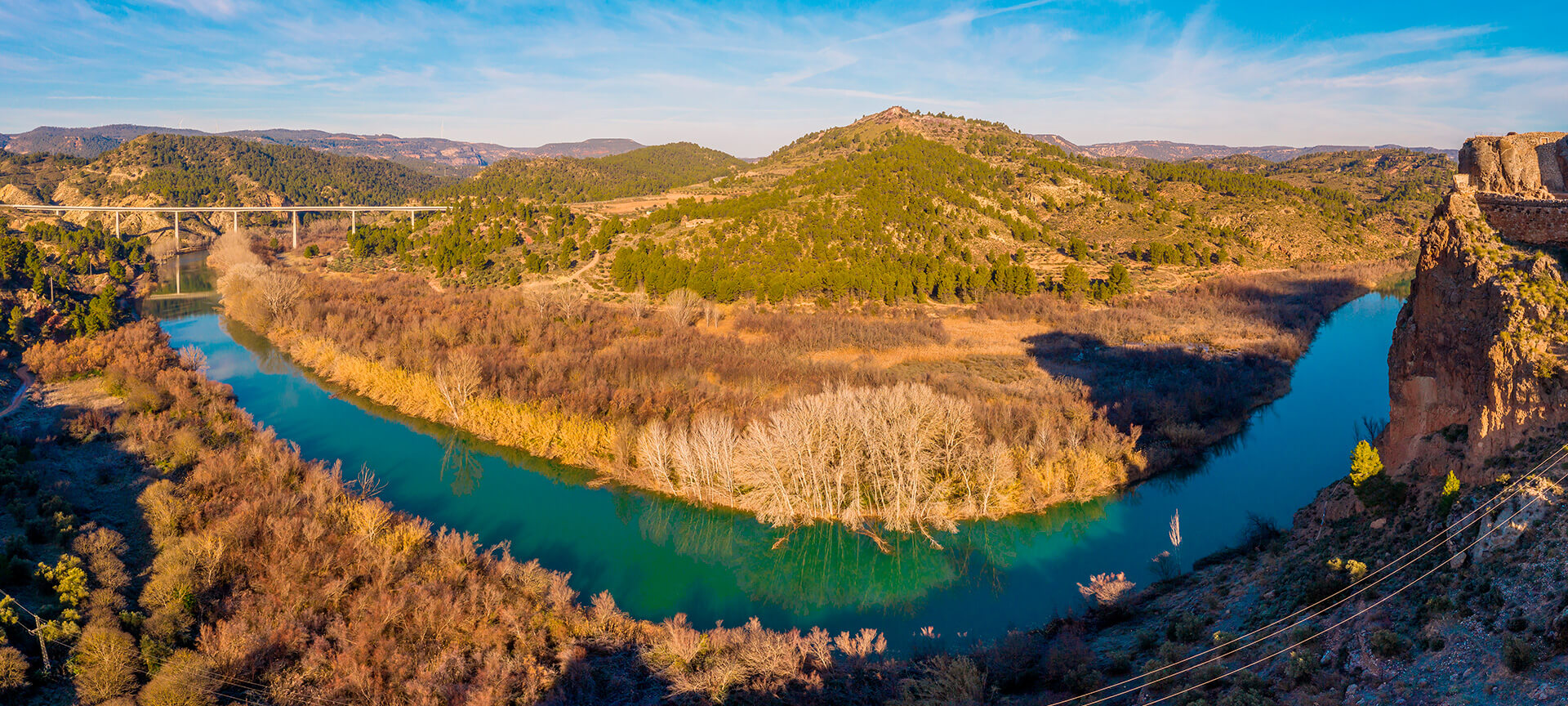
Valle de Cabriel Biosphere Reserve
Adventure in pure nature between mountains, rivers, salt marshes and lagoons
The Cabriel river is the main character of this unique natural space that covers large areas of the regions of AragónAragón, Castile – La Mancha and the Region of Valencia. UNESCO recognised it as a Biosphere Reserve in 2019. Water and spectacular gorges are the main features of the Cabriel Valley.
Valle de Cabriel Biosphere Reserve
Castilla-La Mancha
Valencia-València (Region of Valencia)
Teruel (Aragón)
Teruel (Aragón):
- Albarracín
- Frías de Albarracín
- Vallecillo, El
- Toril y Masegoso
- Jabaloyas
- Villatoya
- Casas-Ibáñez
- Villamalea
- Alborea
- Casas de Ves
- Balsa de Ves
- Enguídanos
- Graja de Iniesta
- Iniesta
- Minglanilla
- Paracuellos
- Pesquera, La
- Villalpardo
- Villarta
- Herrumblar, El
- Zafrilla
- Huerta del Marquesado
- Cuenca
- Laguna del Marquesado
- Valdemeca
- Cierva, La
- Valdemorillo de la Sierra
- Cardenete
- Víllora
- Mira
- Arguisuelas
- Alcalá de la Vega
- Garaballa
- Yémeda
- Villar del Humo
- Narboneta
- Cañada del Hoyo
- Talayuelas
- Graja de Campalbo
- Tejadillos
- Boniches
- Campillos-Sierra
- Henarejos
- Moya
- Cañete
- Fuentelespino de Moya
- Huérguina
- Landete
- Salinas del Manzano
- Campillos-Paravientos
- San Martín de Boniches
- Caudete de las Fuentes
- Requena
- Venta del Moro
- Villargordo del Cabriel
Albacete (Castilla-La Mancha):
Cuenca (Castilla-La Mancha):
Valencia-València (Region of Valencia):
Activa JS
What you need to know
-
Cultural information
Agriculture is the region’s main economic engine, especially the production of wine, almonds, olives and cereal sowing. You can visit the prehistoric cave paintings, awarded the World Heritage designation by the UNESCO, at Villar del Humo (Cuenca), and in most of the municipalities you can find traces of their medieval past, with fortresses and city walls, in places like Moya, Enguídanos and Cañete (Cuenca) and a multitude of archaeological sites, such as the ancient Iberian city located on the hill of Los Villares, close to Caudete de las Fuentes (Valencia). The Mudéjar art in the province of Teruel is also well worth visiting.
-
Environmental information
This area is defined by its rich biodiversity, above all in its flora, with forests ranging from Mediterranean oak to white pine and juniper trees, calcareous grasslands and pastures. The area’s wildlife species include a notable presence of mountain goats, high-mountain birds and birds of prey. The water of the river Cabriel is recognised for its quality and provides a habitat for large numbers of trout.
-
Information for visits
The cities of Valencia (the A-3 highway takes you to the Requena area in about an hour), Teruel (the A-1512 road connects with Albarracín in just over 35 minutes) and Cuenca (where the N-420 road takes you into the surroundings in about an hour) can be used as a reference to reach the protected area. We highly recommend that you visit the las Hoces de Cabriel Nature Reserve visitors centre (in Venta del Moro, Valencia) where you can find useful information for your visit.



